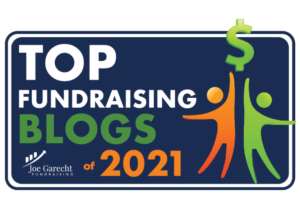Veteran fundraiser Gary Delgado says there are four steps to successful fundraising: Plan. Plan. Plan. Work.
Without an annual fundraising plan we too often fall into the habit of reacting instead of knowing where to focus that will build for the long-term.
I define planning as: The process of setting goals, developing strategies & outlining tasks and timelines to accomplish the goals.
What concerns me is that 75% of the organizations I come into contact with throughout the year do NOT have an annual fundraising plan. Someone comes up with a great idea to raise more money, so they do it with no real rhyme or reason for why.
This is the time of year when I encourage taking the time to talk with key staff and board members to review what your fundraising has accomplished this year and then thoughtfully putting together goals and a structure to meet those goals for next year.
The planning process doesn’t have to take weeks. It can be accomplished in a few hours. And it shouldn’t be done alone by one staff person. Creating an annual fundraising plan will: more deeply engage your board, give you a focus on what to be doing each day; AND can be the difference between ending your fundraising year in the black or not. Between NOW and year-end is the time to design your plan for 2011.
Create an annual plan that causes you to:
- Really know key donors
- Share clear messages
- Set goals and then hold yourself & others accountable
- Continually invite participation
The planning tool I share with groups I coach is an Excel worksheet that will guide your staff and board through the discussions needed to design a plan that stretches you but is also focused to generate the results you need.
This fall I’m delivering more Fundraising Action Planning sessions than ever before. And at the 3-hour Purposeful Planning mini-workshop I delivered in Duluth last week board and staff of ten organizations put some thoughtful time into filling in the planning tool.
What the groups found as they worked to fill in the pages of the planning framework was that they needed more people in the discussion. And having a clear case for support, reviewing income sources carefully with three years side by side, and then setting forth very specific measurable goals are the keys to creating a strong plan.
There are many good resources available to help you with your annual fundraising planning. Here are just a few:
How to Develop a Fundraising Plan – from Stonehill Consulting
How to Develop a Fundraising Plan – from Kim Klein & WORC
Keep Track of Donor Communications with this Awesome Tool
Five Great Ways to Develop a Grassroots Fundraising Plan
Elements of a Fundraising Plan





If you’d like a tool for setting your goals, you can use this web application:
Gtdagenda.com
You can use it to manage your goals, projects and tasks, set next actions and contexts, use checklists, schedules and a calendar.
A Vision Wall (inspiring images attached to your goals) is available too.
Works also on mobile, and syncs with Evernote.
Interesting tool Dan. Thanks for sharing it!
Lori,
I agree. I’m amazed at how many organizations don’t have a fundraising plan. And then they wonder why they aren’t raising the revenues they need. In my article Managing the Development Office, http://bit.ly/a5oSvO planning and doing the math are so critical.
Lori–You’re right the planning makes a difference. Finding the tool that fits each individual situation is the key. I’ve found that a legal pad and a calculator works well for some while others have to have a different tool. Using the right tool, that’s the key…actually using the tool.
st
Gayle, Thank you for the link to your post! Great read and fun graphic.
Thank you to you and to Steve for sharing your insights and wisdom.